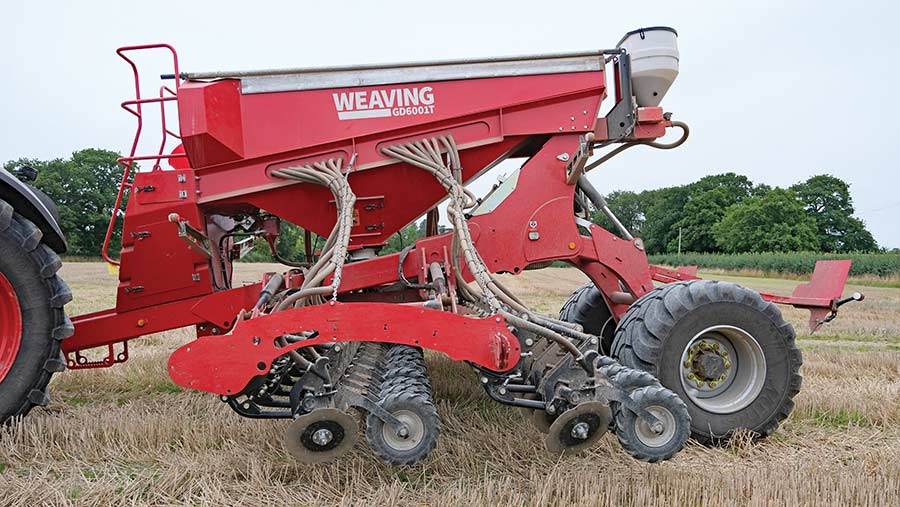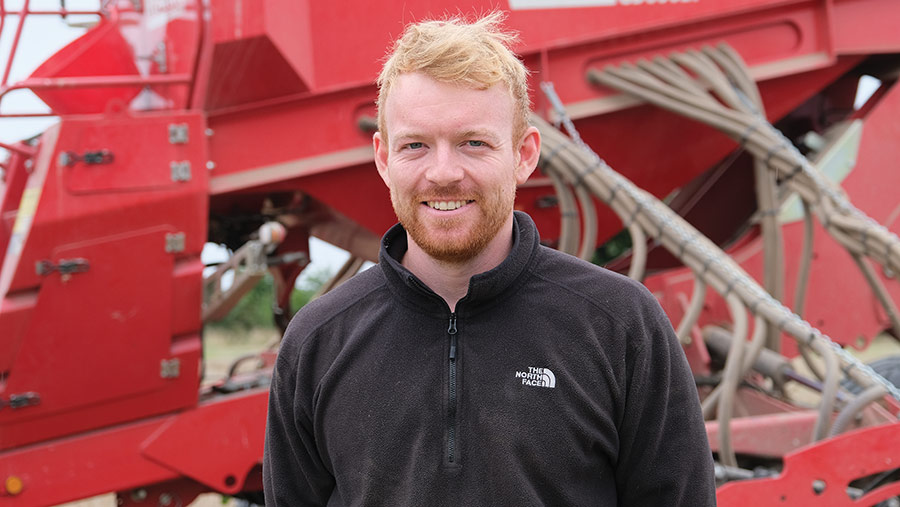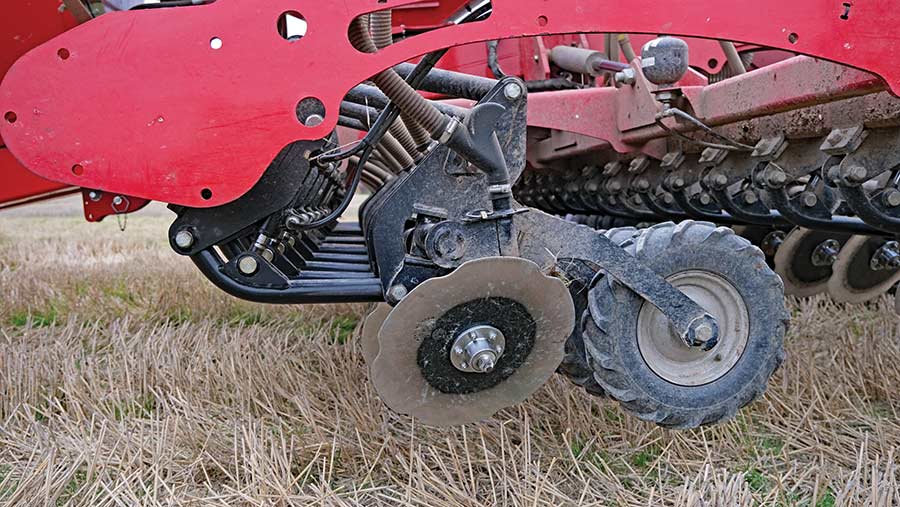Direct drills revisited: Redesigned 6m Weaving GD trumps old version
 © James Andrews
© James Andrews After five years of running a 4.8m Weaving GD drill on the 500ha arable he farms with his father, Edward, Henry Muntz decided to upgrade to a new 6m model.
One reason for making the switch in 2021 was to get some extra capacity, but a bigger draw was the fact that the firm had redesigned the drill, correcting some of the original’s shortcomings.
Chief among these was moving the coulter assembly from the rear to the centre of the drill. This makes it far more compact, gives the driver a better view of the discs and makes it far easier to manoeuvre.
See also: Driver’s View: Henry Muntz’s Weaving GD drill
This setup has also dramatically improved handling on the road, which was a big problem with the old model.
On that, the significant weight behind the rear wheels unbalanced the machine, making it hard to keep in a straight line.
Weaving has also uprated the pneumatic tyres on the press/depth wheels, which has avoided the repeated punctures he used to have to put up with.

Henry Muntz © James Andrews
Weaving Trailed GD Drill (2021)
- Width/spacing 6m/16.6cm
- Coulters/Max pressure Angled double-disc/240kg
- Hopper 5000-litre split tank
- Price paid £86,000
Effective disc coulters
The angled double-disc coulter arrangement has seen little change though. That’s no bad thing as he’s been happy with the way they’ve performed.
Typically, he’ll work directly into stubbles behind the combine, although some ground does get lifted with a Weaving low-disturbance subsoiler, particularly sandier land that tends to pack down tight.
He’s also been experimenting with a straw rake.
Generally, the press wheels will do a decent job of closing the slot but most ground, other than that being planted with cover or catch crops, will get a pass with the Cambridge rolls to finish the job off.
Seeding depth is consistent on flat ground, but the press/depth wheels sit quite far back from the coulters, causing them to dig in too deep or ride a little shallow when working on undulating terrain.
He’s found the drill to be flexible enough to work in most conditions, but he aims to plant early in the autumn before it turns wet. “It will still get a crop in when it turns sticky, but it doesn’t look pretty,” he says.
He also has to keep an eye out for small stones in these conditions, which can flick up and get wedged in the disc coulters, stopping them turning.
Lifespan of the coulter assemblies on their Warwickshire clay loam and red marl soils is just over 1,000ha and it costs about £2,500 to replace them.
This is for the complete double-disc assembly including the bearing. “The wearing metal cost works out at about £1/acre, which I think is pretty reasonable.”
Fuel use of the 280hp Fendt 828 he uses to pull it is also minimal at just 2-litres/ha.

© James Andrews
Three seed hoppers
The new drill came specced with a split main hopper and a Stocks Rotor-Meter unit that allows three products to be applied at the same time.
This comes in handy for cover crops, where buckwheat will be placed in the large section of the main hopper, phacelia in the other and a blend of crimson clover and linseed in the Stocks.
He’s also been planting a companion crop of buckwheat with oilseed rape for the past few years. It may be a coincidence, but he hasn’t had any crop failures due to flea beetle since.
Yields
Since moving to the GD system from a min-till regime followed by a Vaderstad Rapid drill, yields have remained consistent and there haven’t been any notable disasters.
However, they have abandoned growing spring oats as they were returning disappointing yields.
Soil friability and organic matter content is also improving and the ground tends to dry out faster on the top, making it easier to drill into good conditions.
Likes and Gripes – Previous trailed GD Drill (2016)
Likes
- Simple and low maintenance
- Ability to drill through thick cover crops
- Everything is accessible and easy to calibrate
- Low soil disturbance
Gripes
- Horrible on the road
- Dribbles out seed on headland
- Press wheel punctures
- Paint isn’t brilliant
Likes and Gripes – New trailed GD Drill (2021)
Likes
– same as 2016 model plus…
- Compact design
- Better paint quality
- Seed doesn’t dribble out on headlands
Gripes
- Variable depth control on uneven ground
- Stones can get wedged in discs in sticky conditions

